Different types of gyroscopic sensors (MEMS, Ring Laser Gyro, Optical & mechanical gyroscope) has different application scenarios. This article covers different types of gyroscopic sensor, their working, and their applications.
What is Gyroscope?
A gyroscope is a device that measures or maintains the orientation and angular velocity of a rotating body by utilizing the earth’s gravitational forces.
They have applications in navigation devices. In this article, we will discuss different types of gyroscopes, how do gyroscopes work? and their applications. We suggest you also read this article on various types of sensors and their applications.
Types of Gyroscopes
The following types of gyroscopes are used in various products to measure or control the rotational motion of a body:
- Mechanical Gyroscopes
- MEMS Gyroscopes
- Ring Laser Gyroscopes
- Optical Gyroscopes
We will discuss the working and applications of the above-discussed gyroscopes in detail.
1. Mechanical Gyroscope
Mechanical gyroscopes are the oldest type of gyroscope. They utilize gravitational pull to get the required stability and motion in a body. Click here to buy a mechanical gyroscope from amazon.
What is Mechanical Gyroscope?
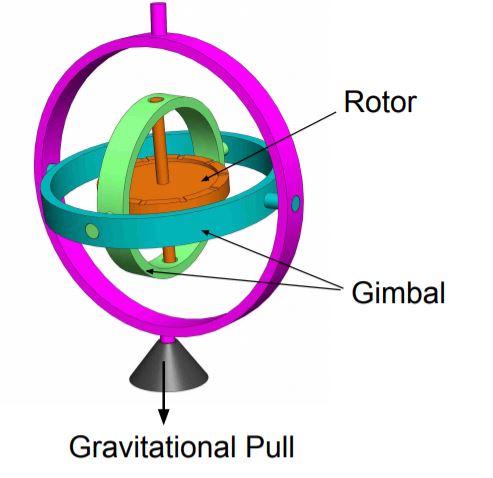
As shown in the above image, a Mechanical gyroscope consists of a freely spinning disk mounted on a gimbal.
This spinning disk produces gyroscopic forces that resist any change in the spinning disk axis. These gyroscopic forces in the mechanical gyroscope provide stability and maintain the direction of the moving objects.
How a Mechanical Gyroscope Work?
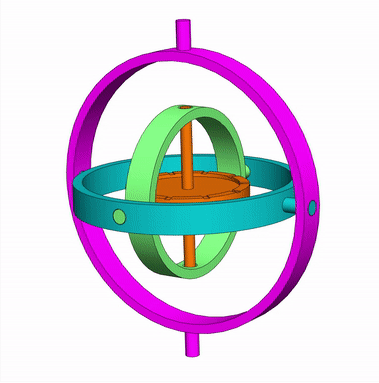
Spinning-disk in a gyroscope produces gyroscopic forces in the direction of the spinning axis. These forces resist any change in the axis.
As shown in the above animation, irrespective of the movement of the outer frame of the gyroscope, spinning disks keep on rotating on the same axis. This gyroscopic phenomenon has applications in stabilizing large moving objects.
For stabilization gyroscope outer frame is attached to the moving object. And the disk is spun according to required stabilizing forces.
We can understand more about the working of mechanical gyroscopes by relating it to a phenomenon known as Precession. And to understand Precession, let’s first understand What is Right-Hand Thumb Rule?
Right Hand Thumb Rule
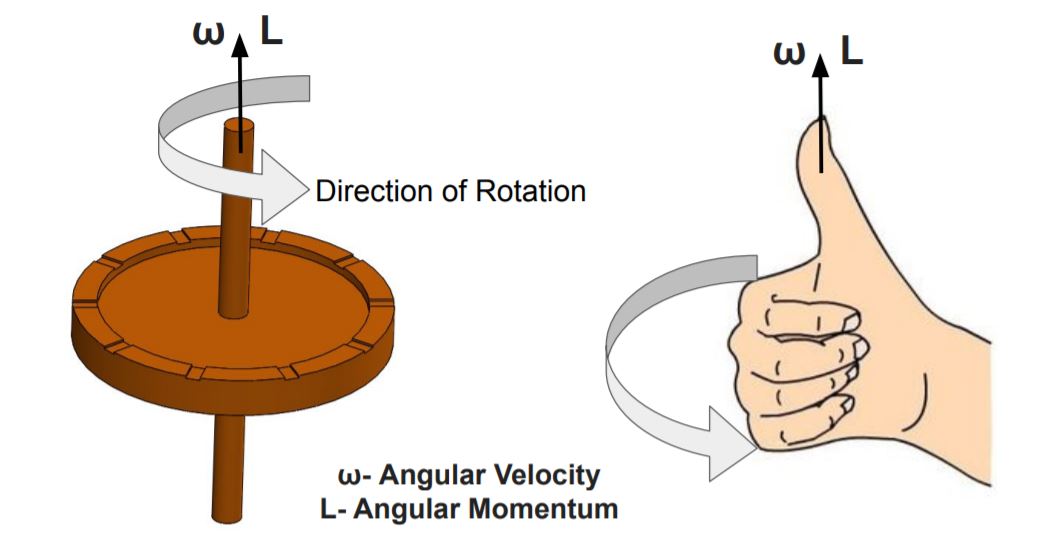
The Right-hand thumb rule determines the direction of angular velocity and angular moment of a rotating disk about its axis. According to the Right-hand rule, when we curl fingers in the disk rotation direction, the direction of the thumb determines the direction of angular velocity and angular moment.
For example, angular velocity acts in the upward direction when a disk rotates in a counterclockwise direction. Let’s use this right-hand thumb rule to understand what is precession?
What is Precession?
Precession is the change in the orientation of a freely spinning wheel due to gyroscopic forces acting on a spinning wheel when an external force is applied.
Let’s try to understand the precession phenomenon and how it is related to gyroscopic forces using the example of the spinning wheel?
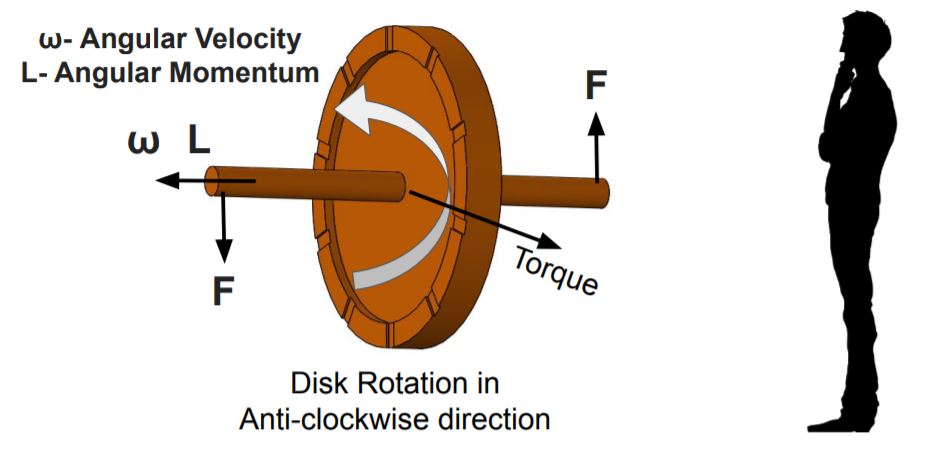
The spinning wheel generates a torque perpendicular to the applied force and spinning axis when an external force is applied to the spinning wheel shaft perpendicular to the wheel spinning axis.
Due to this torque, spinning wheel orientation starts changing. This phenomenon of change in spinning wheel orientation is known as precession. Therefore the precession occurs due to gyroscopic force that resists any change in the axis of the spinning wheel.
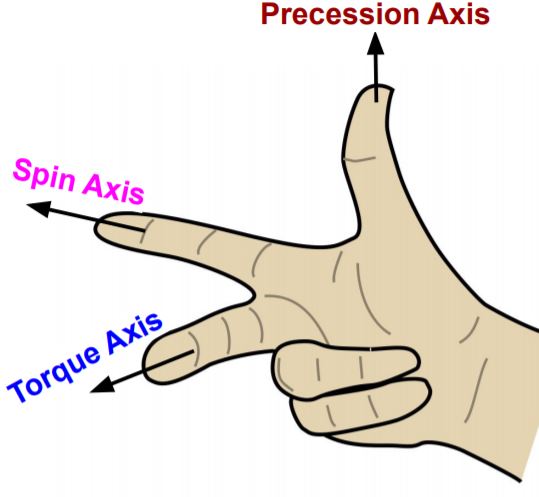
We can utilize the right-hand rule to determine the direction and axis of the change in the spinning wheel orientation or the precession. This property of the gyroscope has application in stabilizing flying vehicles.
2. MEMS Gyroscope
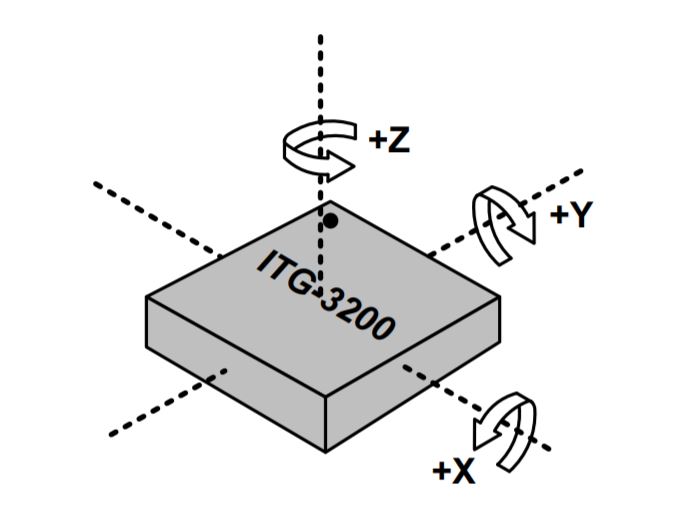
MEMS (Micro-Electro-Mechanical-Systems) gyroscopes are very miniature size gyroscopic sensors widely used in electronics devices. They utilize a vibrating element to determine the angular velocity of a rotating body.
Compared to mechanical gyroscopes, MEMS gyroscopes do not stabilize bodies in motion. These MEMS gyroscope sensors calculate angular velocity in any of the three directions.
MEMS-type gyroscopic sensors have applications only in calculating a small number of rotations such as yaw roll and Pitch in a freely moving body. You can not use them to determine the angular speed of rotating shafts
How does a MEMS Gyroscope Work?
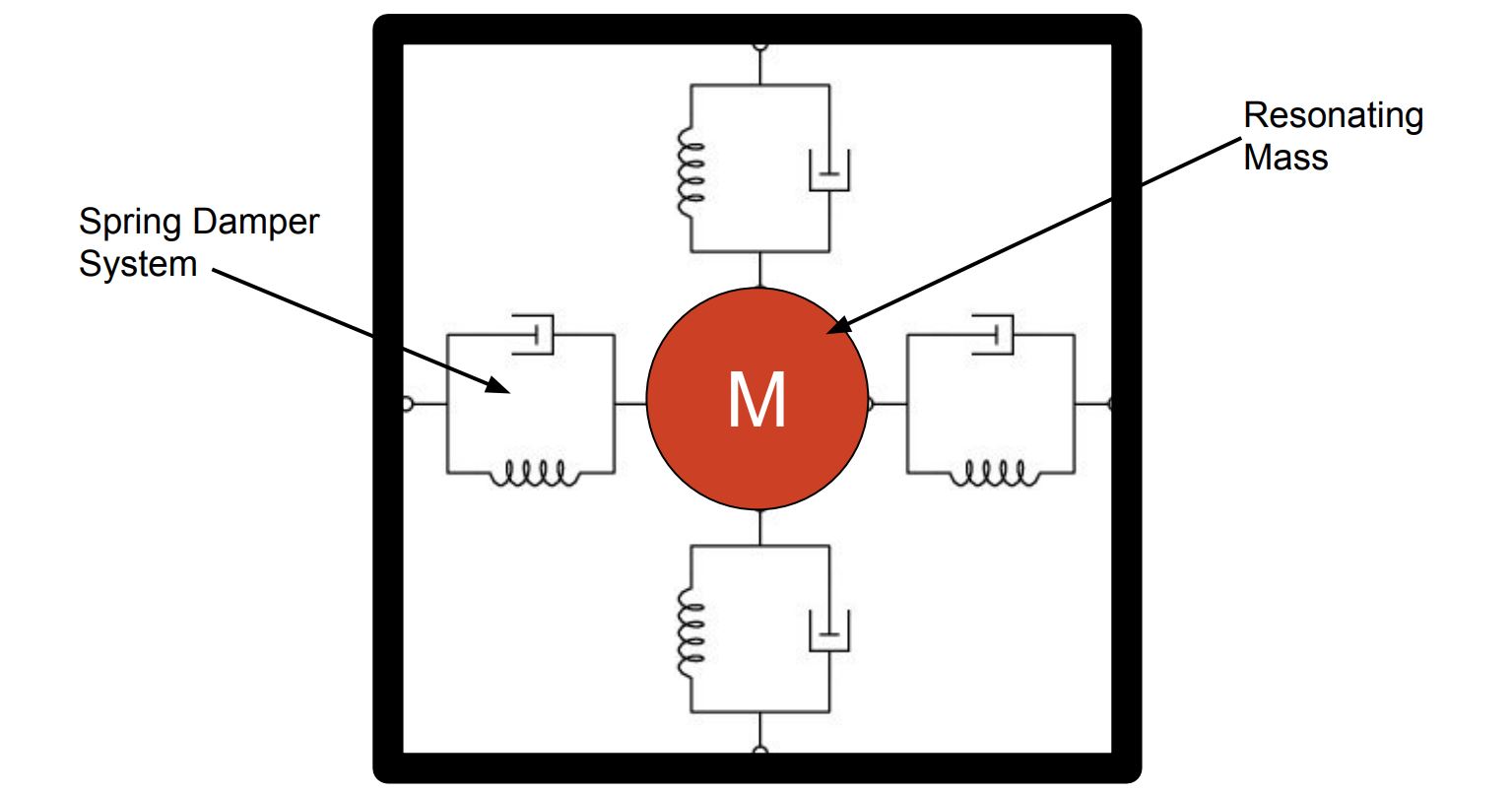
MEMS gyros consist of a resonating structure or a small size ((100 microns) spring-mass system. It consists of a spring, damper, and resonating mass.
When the gyroscope rotates, resonating mass shifts from its original position. MEMS gyro converts this movement into an electrical current directly proportional to the movement of resonating mass.
Afterward, a microcontroller or processor processes this current to measure the motion. Therefore the sensitivity of MEMS gyro is directly proportional to the oscillating mass.
3. Ring Laser Gyro
Similar to optical gyro, ring laser gyro calculates the rotation motion using the Sagnac Effect. Ring laser gyroscopes work by moving light pulses in clockwise and anticlockwise directions inside optical fiber coils.
The difference in the light frequency in two directions is measured using the fringe count to calculate the rotation.
4. Optical Gyroscopes
MEMS (Micro-Electro-Mechanical-Systems) gyroscopes are very miniature size gyroscopic sensors widely used in electronics devices. They utilize a vibrating element to determine the angular velocity of a rotating body.
Compared to mechanical gyroscopes, MEMS gyroscopes do not stabilize bodies in motion. These MEMS gyroscope sensors calculate angular velocity in any of the three directions.
MEMS-type gyroscopic sensors have applications only in calculating a small number of rotations such as yaw roll and Pitch in a freely moving body. You can not use them to determine the angular speed of rotating shafts.
Gyroscope Applications
Gyroscopes have applications in calculating and controlling the position of a body w.r.t. a reference plane in 3D space. Following are the applications of the gyroscope in various industries:
1. Navigation Compasses
Mechanical Gyroscopic compasses are widely used in large ships to determine the actual north position. Gyrocompass determines the north direction by considering the axis of earth rotation. And ferromagnetic materials do not impact their function. Therefore gyrocompasses are more accurate and reliable than a magnetic compasses.
2. Assist in Stability
Mechanical gyroscopes can stabilize large free-moving bodies using gyroscopic forces. For example, gyroscopes help in stabilizing
- Airplanes during turbulence
- Self Driving bicycles.
- Large buildings
- Hoverboard (Self Balancing Scooter)
- Keep the large ship more balanced during thunderstorms.
3. In Localization
MEMS gyroscopes with other sensors (GPS, pressure sensor, and accelerometer) have an application to determine rigid body actual position and orientation in free space.
4. Determine Product Orientation
MEMS Gyroscopes are used to determine the orientation of a body in free space. For example, gyroscopic sensors have applications in the following products:
- Quadcopter, planes, and robot actual position.
- Used in smartphones to detect smartphone orientation and rotation.
- In Virtual Reality, Augmented reality Glasses and other products.
5. In Smartphones
MEMS gyroscope has the following applications in smartphones.
- When we rotate the smartphone, youtube video also rotates itself if auto rotation is on. We achieve this feature because the smartphone gyro sensor gives input on smartphone rotation to the smartphone processor. We can not get this screen rotation feature without a gyroscope sensor.
- GPS along with a gyroscope and accelerometer is used in smartphones to get an accurate position.
- Some Smartphone games use a gyroscope as a control input sensor.
- Google Fit uses an accelerometer along with a gyroscope to track the activities of a user.
List of Products that Use Gyroscopes
Following are the example of products that use gyroscopes to determine angular position or for stabilization.
- Self Driving vehicles
- Ships
- Airplanes
- Hoverboard
- Smart Phones
- Augmented reality and virtual reality products.
- Navigation compasses
- Self Driving Cars
- Localization Devices.
- Smart Watches and Trackers.
- Motion Tracking Devices
We will keep updating this article on different types of gyroscopes and how do they work? Write your suggestions, comments, and questions on the working of gyroscopes in the comment box. We suggest you read this article on go no go gauges.

Add a Comment